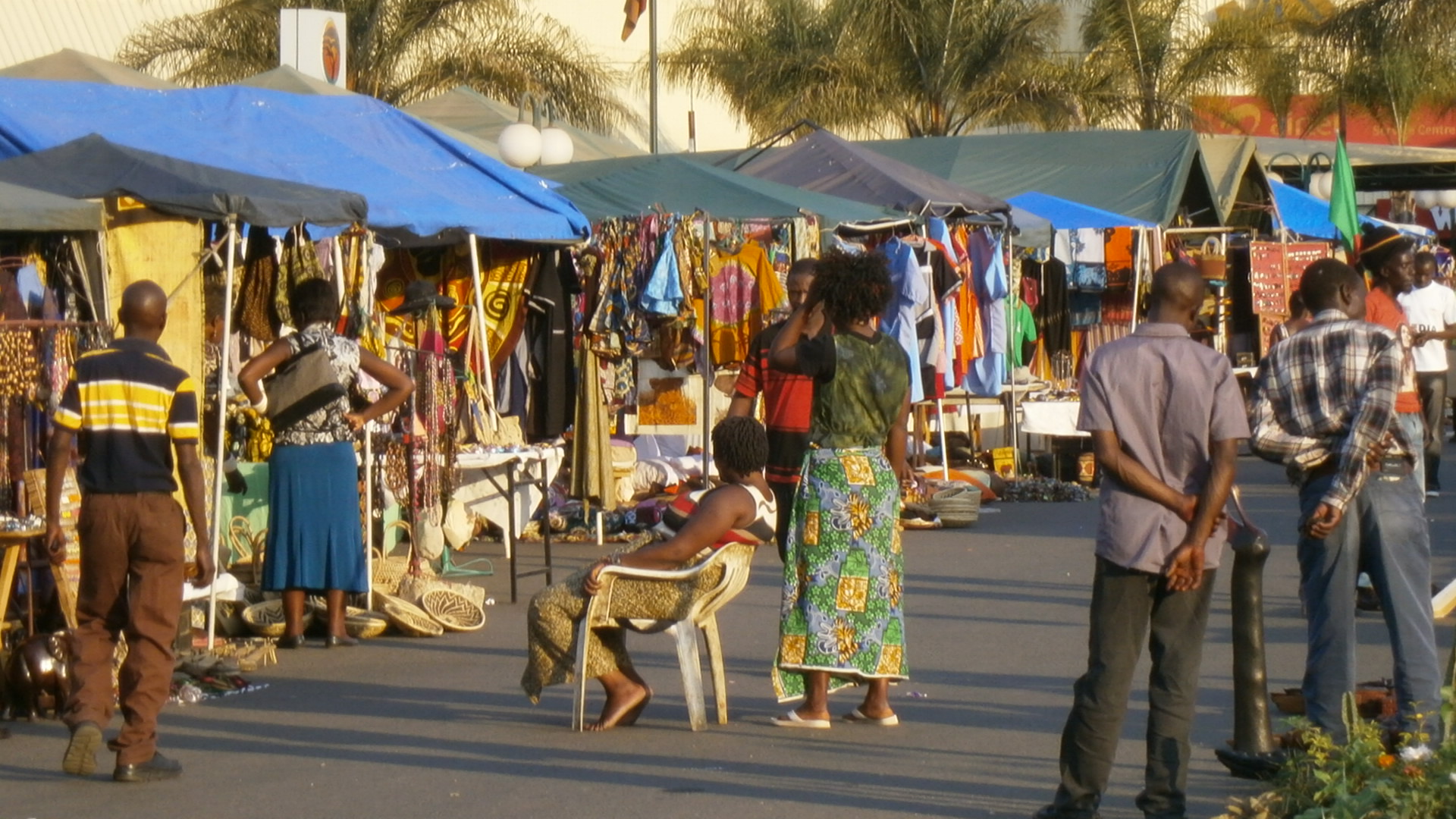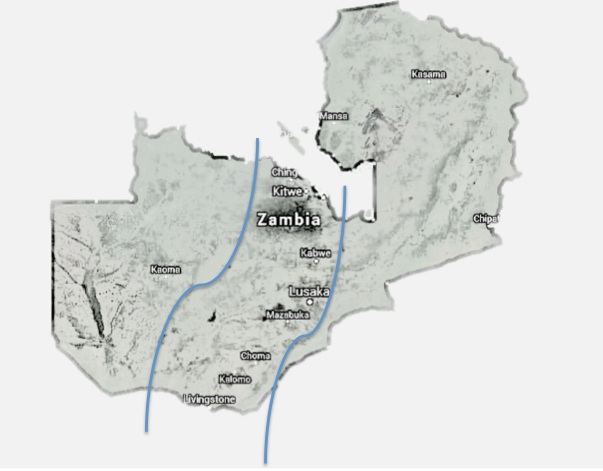Co-authored by Simone Claar and Sebastian Schäfer
While caught up in a regular traffic jam in the minibus to Lusaka city centre we had plenty of time to observe the people around us. We were struck by the modern life style, the variety of smart phones and fashion awareness. Thus, we were wondering about how it could be that OECD still classifies Zambia among ‘least developed countries’. Something was missing in the story.
The Journal of the African marketing Confederation (Third quarter 2013: 42) shares our view and assumes Zambia to be ‘among the best performers on the continent, experiencing the highest growth rates and GDP in the world’. According to the Bank of Zambia, the economy is experiencing a prolonged period of growth (with growth rates between 5.7 and 7.6 percent between 2006 and 2012) and an 80% increase of the GDP per capita from 2000 to 2010 (IGC 2013: 1).
Photo 1: Lusaka Arcades, Arts and Craft market, Sunday 6th of October 2013, Copyright: Simone Claar
From this perspective, it is also not surprising that the World Bank upgraded Zambia from a low-income country to a low-middle-income country in 2011 . Our field trip offered the opportunity to discuss the actual background and practical impact of this ‘improvement´ for Zambia. In practice, the World Bank’s categorization transfers Zambia to a transitional phase of three to four years, which is a blend status that continues offering non-concessional loans. Whether this status can be maintained, will be seen in the future. Nevertheless, the upgrade offers an ideal selling moment to attract further investments in Zambia. The boom was mostly caused by privatization of the mining sector in the early years of the millennium. Besides, the traditional main export industry, manufacturing and in particular construction industries turned out to be key drivers of Zambia’s economic growth (IGC 2013). The economic development and wealth, however, is limited to the northern Copperbelt region, Lusaka and southern Livingstone. Nevertheless, according to the World Economic Competitive Report, Zambia belongs to the African top 10 economies in 2013.
Not only has the rating by the World Bank promised a new picture of the Zambian economy, but also the ongoing recalculation of GDP numbers. How skyrocketing new data on the consumption basket can be, has recently be shown in Ghana where the figures have been updated in an increase by 60%. Since data is frequently generated in sectors of demography, households, education and health; Zambia’s GDP figures are still calculated based on the economic census from 1994. Hence, it is expected that the present predictions underestimate recent developments in the mining and service industries, but overestimate forestry, while agriculture tends to be stable. In Zambia this process of recalculating is underway and the official figures will be released in 2014. According to an official of the African Development Bank, this increase will be most likely between 25 and 60 percent. Taking the current figures of 2012 with a GDP per capital (PPP) of 1.720 US$, the upgrade would increase estimations to 2.000-2.600 US$. According to the World Bank ranking, Zambia would move up in the ranking from 154 to 138 surpassing Kenya, Lesotho, and Senegal among others.
This recent shift suggests that a new regional economic force – an African Tiger - might be emerging in near future, an outlook, which would fit much better with what our daily experiences tell us. No wonder that Japan has reacted to these recent changes by starting to increase private investments in Zambia also under the so-called south-south ‘Triangle of Hope’ project. This project aims at facilitating promotion of trade and investment to Zambia with the technical assistance of Japan International Cooperation Agency (JICA). The project pays special attention to how most successful economic development experiences in Malaysia can be utilized in the context of present economic challenges in Zambia.
Thus, in future our minibus trip to Lusaka city centre will show us that the traffic jams continue because of the rising amount of cars due to the increasing economic wealth.







